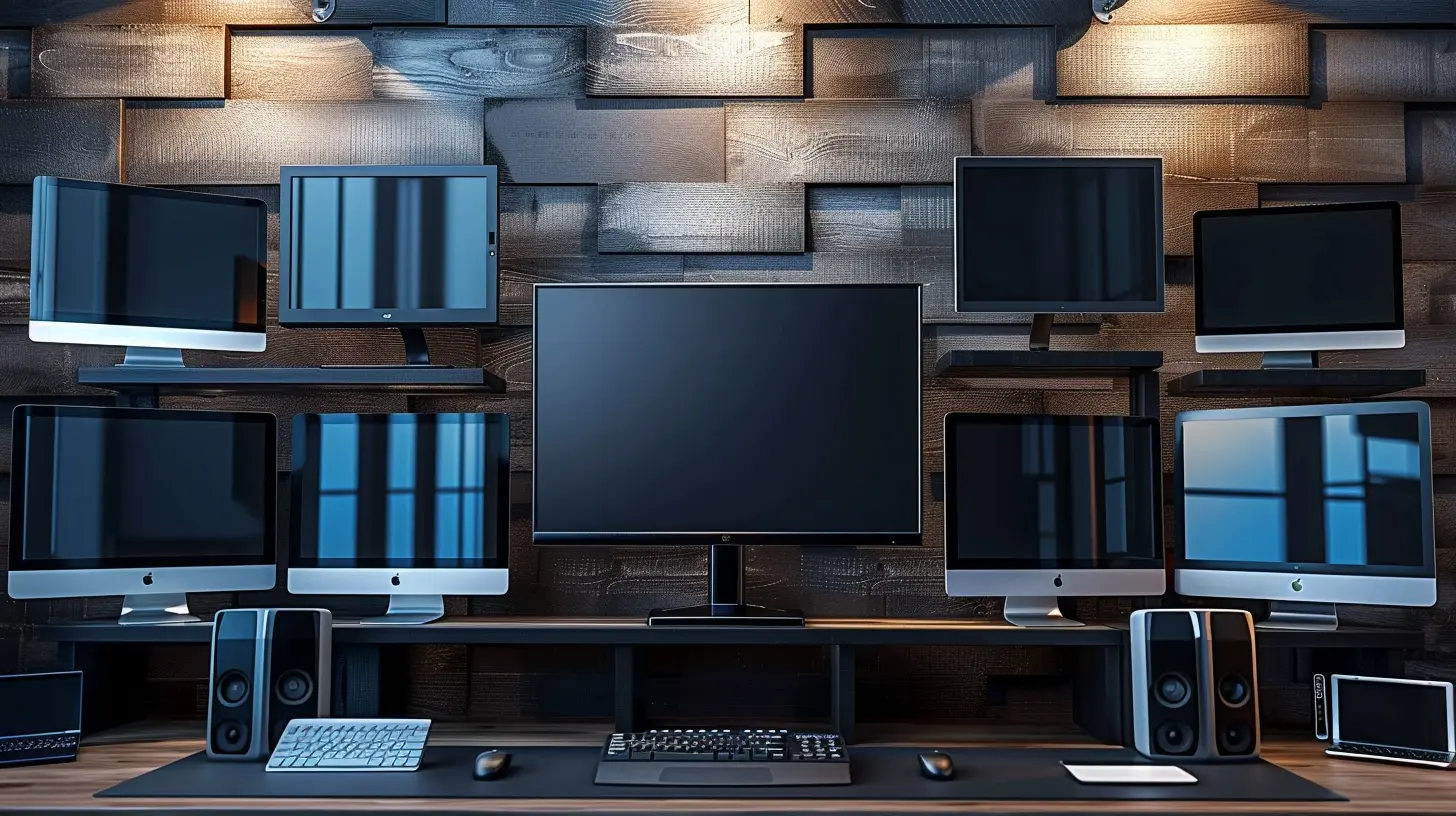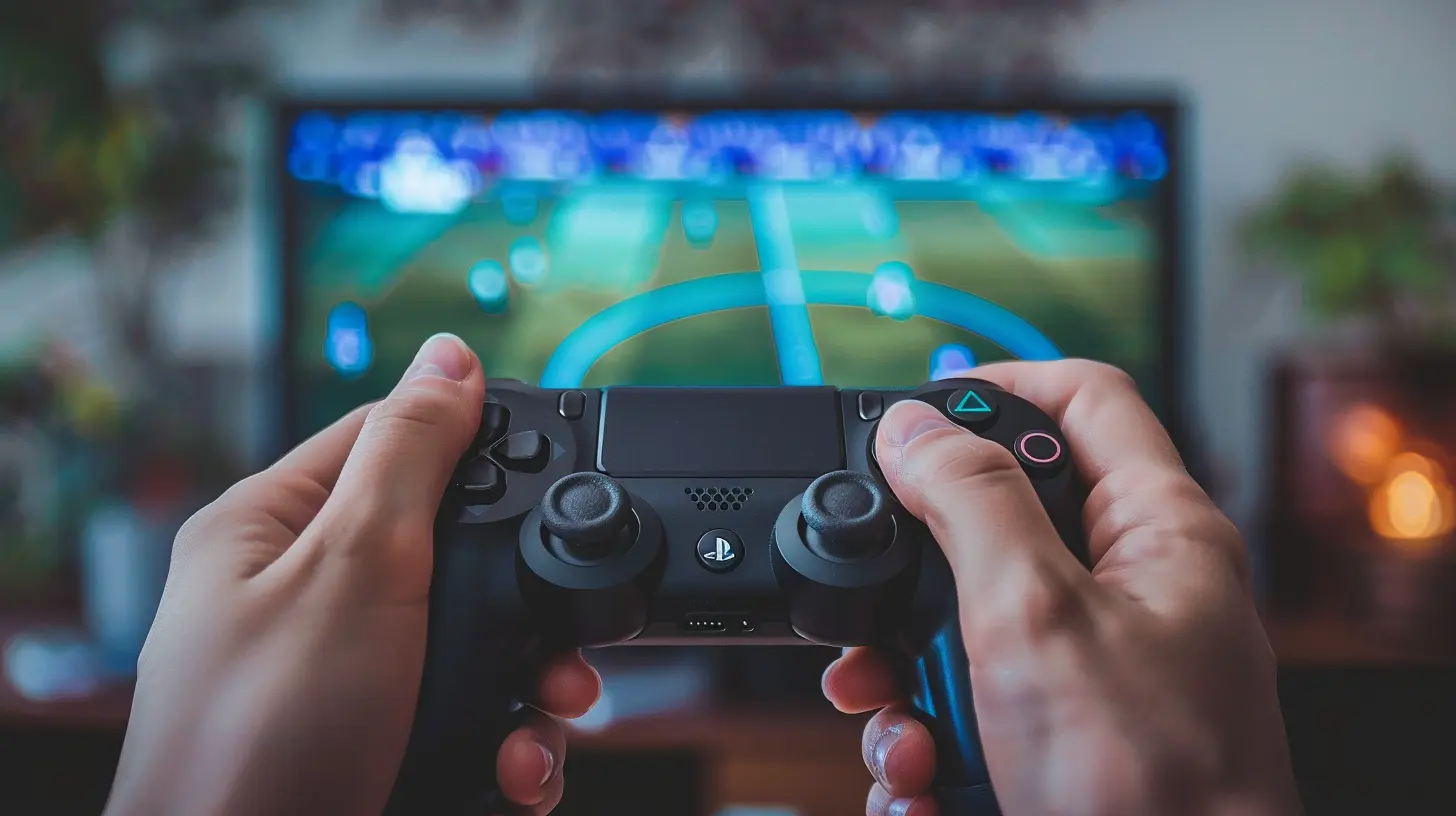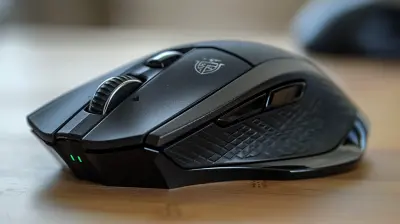The Rise of 1440p Monitors: Are They Worth the Upgrade Over 1080p?
18 May 2025
When it comes to gaming gear, the monitor is like the window to your virtual world. A great monitor can elevate your gaming experience, while a subpar one can leave you squinting and questioning your investment. Over the past few years, 1440p monitors—also known as QHD (Quad High Definition)—have been making waves. But the burning question is: Are they actually worth upgrading over the tried-and-true 1080p displays? Let’s break it down and see if jumping on the 1440p bandwagon makes sense for you.
What Is 1440p Anyway?
Alright, let’s start with the basics. When we say "1440p," we’re talking about a display resolution of 2560x1440 pixels. To put it simply, this resolution has about 78% more pixels than your standard 1080p screen (1920x1080). That’s a lot more visual real estate! It sits nicely between 1080p and 4K (3840x2160), so you can think of it as the Goldilocks resolution—not too low, not too high, but just right for many gamers.
Why Are 1440p Monitors Gaining Popularity?
1. Crisper Visuals Without Overloading Your PC
1080p monitors have been the go-to for years, and for good reason—they’re affordable, widely supported, and don’t require a beefy PC to run games smoothly. But 1440p offers a noticeable jump in image quality without the massive performance hit you'd get from jumping to 4K. It’s like switching from DVD to Blu-ray; everything just looks cleaner and sharper. Small details in games, like textures, grass, or UI elements, pop more in 1440p, making it a sweet spot for gamers who crave better visuals without tanking their frame rates.2. Future-Proofing
Let’s be real—technology is evolving faster than ever. While 1080p is still relevant, it’s slowly being phased out as the “standard” resolution. Developers are optimizing games for higher resolutions, and graphics card manufacturers are designing GPUs to handle 1440p and 4K with ease. Buying a 1440p monitor now means you’re staying ahead of the curve. Think of it as gearing up for the next generation of gaming.3. Immersive Gaming Experience
If you’ve ever felt like something was missing in your gameplay, it might just be the resolution. 1440p monitors can provide a more immersive experience, especially on larger screen sizes. With 1080p, scaling up the screen size often results in blurry or pixelated visuals. But with 1440p, you get that sweet spot—big, bold visuals without sacrificing image clarity. It’s like sitting in the front row of a theater but being able to see every detail without feeling overwhelmed.
Is Your Hardware Ready for 1440p?
Here’s the catch: 1440p is more demanding than 1080p. If you’re rocking an older GPU, you might struggle to hit those buttery-smooth frame rates in newer games. A mid-tier or high-end graphics card—like an NVIDIA RTX 3060, AMD RX 6700 XT, or better—is highly recommended for 1440p gaming.Does that mean you need to spend a fortune? Not necessarily. Many modern GPUs can handle 1440p gaming at decent settings, but be prepared to tweak some graphics options in AAA titles if you’re not running the latest hardware. And if you’re into esports games like League of Legends or CS:GO, good news—these less demanding titles will run like a dream on 1440p even with a modest GPU.
Comparing 1080p vs. 1440p: The Key Differences
1. Resolution and Clarity
We’ve already touched on this, but let’s unpack it a bit more. 1080p is great for smaller screens (think 24-inch monitors) but can start to look stretched or grainy on anything larger. On the other hand, 1440p shines on midsize and large screens (27 inches and up), offering sharp visuals without straining your eyes.2. Performance
If you’re a competitive gamer who prioritizes frame rates over visuals, sticking with 1080p might make sense. It’s easier to achieve high FPS (frames per second) on a 1080p monitor since it requires less GPU horsepower.However, many modern GPUs are designed to handle 1440p gaming comfortably, giving you the best of both worlds—great performance and improved visuals. So unless you’re trying to hit 300 FPS in Valorant or Overwatch, 1440p’s performance trade-off is minimal for most gamers.
3. Price
Let’s talk money. 1080p monitors are dirt cheap these days. You can snag a decent one for under $150, making them perfect for budget setups. But quality 1440p monitors have become more affordable, too. Models like the Dell S2721DGF or LG UltraGear 27GL83A sell for around $300-$400, offering great bang for your buck. Sure, it’s more expensive than 1080p, but the upgrade in visuals and features is well worth it for many gamers.Who Should Upgrade to 1440p?
The Casual Gamer
If you game occasionally and don’t feel the need to max out graphics settings, 1080p might still serve you well. It’s cheap, reliable, and easy on your hardware. But if you’re upgrading your rig soon, consider going for 1440p for that added visual flair.The Competitive Player
If you’re a die-hard esports player, 1080p monitors with high refresh rates (120Hz, 144Hz, or even 240Hz) are your best bet. Most competitive titles aren’t demanding, but that extra FPS can give you a slight edge. That said, more 1440p monitors with high refresh rates are hitting the market, bridging the gap between clarity and performance.The Enthusiast
If you live for jaw-dropping visuals and want to immerse yourself in sprawling open-world games like Cyberpunk 2077, Elden Ring, or Red Dead Redemption 2, 1440p is a no-brainer. The added detail and sharpness make exploring these worlds a feast for the eyes.Downsides of 1440p Monitors
Of course, no tech upgrade is perfect. 1440p monitors tend to cost more, not just for the display itself but also for the hardware needed to run games at this resolution. If you’re on a very tight budget, the extra expense might not be worth it right now.Another thing to note is scaling. If you play older games or use applications that don’t scale well, you might encounter some UI issues. However, this is becoming less of a problem as developers adopt higher resolutions.
Final Thoughts: Is It Worth It?
So, should you upgrade from 1080p to 1440p? Ultimately, it boils down to your gaming preferences, hardware setup, and budget. If you’ve got the GPU for it and crave better visuals, 1440p monitors are absolutely worth the investment. They strike a perfect balance between affordability, performance, and eye candy. But if you’re happy with 1080p and prioritize high FPS on a budget, there’s no shame in sticking with what works for you.Think of it this way: upgrading to 1440p is like leveling up from a compact car to a sporty sedan. It’s not the full luxury experience of a 4K monitor, but it’s a noticeable upgrade that’ll make your journey (or gaming session) a lot more enjoyable.
all images in this post were generated using AI tools
Category:
Hardware ReviewsAuthor:

Leif Coleman
Discussion
rate this article
4 comments
Stephanie Cantu
Great article! The rise of 1440p monitors is exciting—definitely worth considering for gamers seeking improved visuals. Higher resolution can elevate your gaming experience. Can’t wait to see more on this topic!
May 28, 2025 at 3:07 AM

Leif Coleman
Thank you! I’m glad you enjoyed the article. The shift to 1440p indeed offers gamers a noticeable improvement in visuals. Stay tuned for more updates!
Bradley Baker
1440p monitors offer a noticeable upgrade in clarity and detail over 1080p, especially for gamers seeking immersive experiences. If your budget allows, it's a worthwhile investment!
May 25, 2025 at 5:11 PM

Leif Coleman
Thank you for your insight! Absolutely, 1440p monitors significantly enhance visual fidelity, making them a great choice for gamers looking for a more immersive experience.
Rivenheart McGrath
Unseen benefits await—dare to discover the truth?
May 23, 2025 at 4:48 PM

Leif Coleman
Absolutely! Upgrading to 1440p offers enhanced clarity and detail, making your gaming and media experience much more immersive. It’s definitely worth exploring!
Vienna Weber
1440p monitors enhance gaming visuals significantly, offering sharper graphics and improved detail over 1080p.
May 18, 2025 at 3:44 PM

Leif Coleman
Absolutely! 1440p monitors provide a noticeable boost in clarity and detail, making them a worthwhile upgrade for serious gamers.



